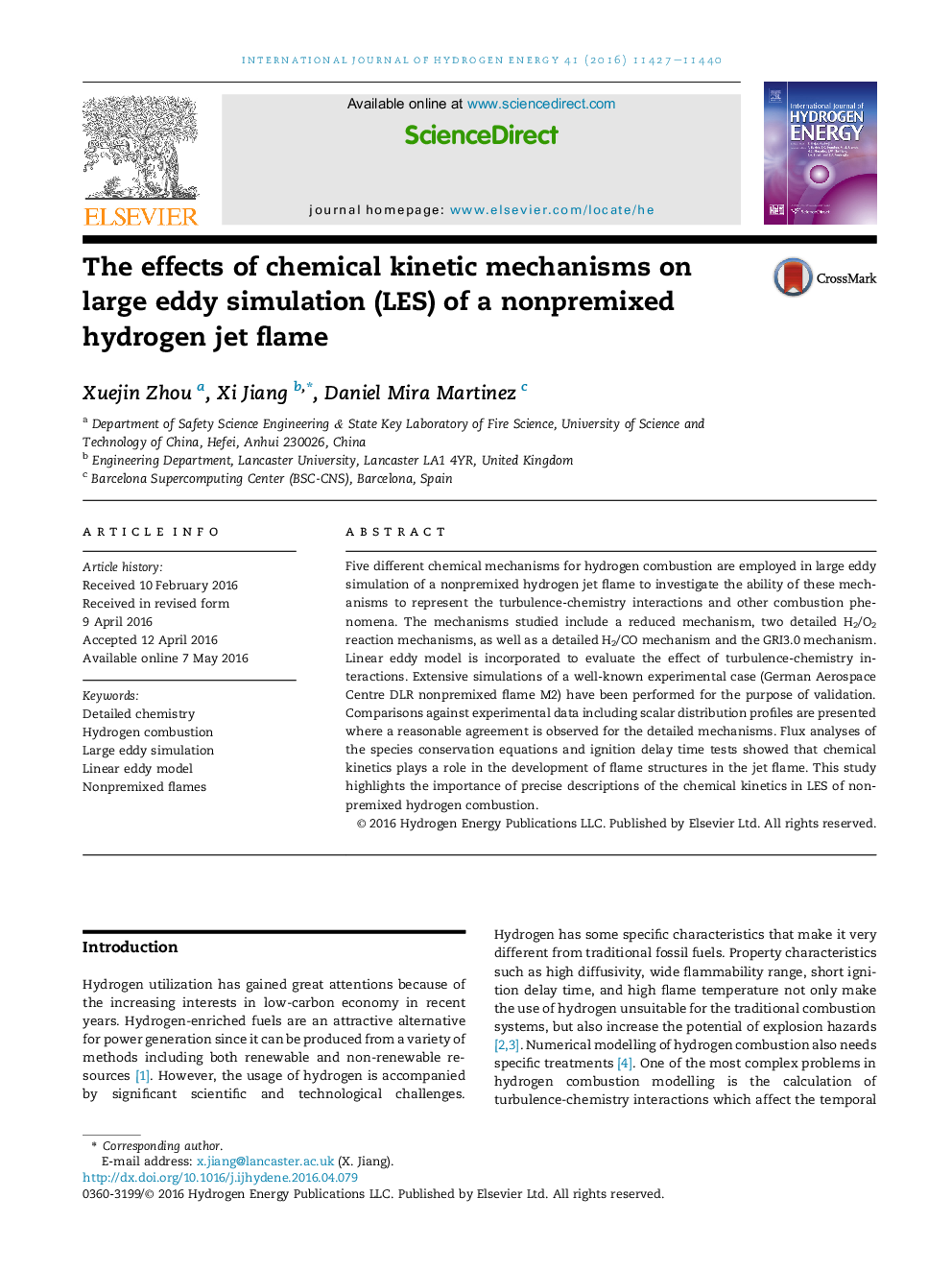| Article ID | Journal | Published Year | Pages | File Type |
|---|---|---|---|---|
| 1269575 | International Journal of Hydrogen Energy | 2016 | 14 Pages |
•A nonpremixed hydrogen flame was simulated using LES with detailed chemistry.•Effects of five different kinetic mechanisms on the LES results were examined.•The linear eddy model was employed for the turbulence-chemistry interactions.•Detailed H2/O2 mechanisms lead to reasonable agreements with experimental results.
Five different chemical mechanisms for hydrogen combustion are employed in large eddy simulation of a nonpremixed hydrogen jet flame to investigate the ability of these mechanisms to represent the turbulence-chemistry interactions and other combustion phenomena. The mechanisms studied include a reduced mechanism, two detailed H2/O2 reaction mechanisms, as well as a detailed H2/CO mechanism and the GRI3.0 mechanism. Linear eddy model is incorporated to evaluate the effect of turbulence-chemistry interactions. Extensive simulations of a well-known experimental case (German Aerospace Centre DLR nonpremixed flame M2) have been performed for the purpose of validation. Comparisons against experimental data including scalar distribution profiles are presented where a reasonable agreement is observed for the detailed mechanisms. Flux analyses of the species conservation equations and ignition delay time tests showed that chemical kinetics plays a role in the development of flame structures in the jet flame. This study highlights the importance of precise descriptions of the chemical kinetics in LES of nonpremixed hydrogen combustion.
